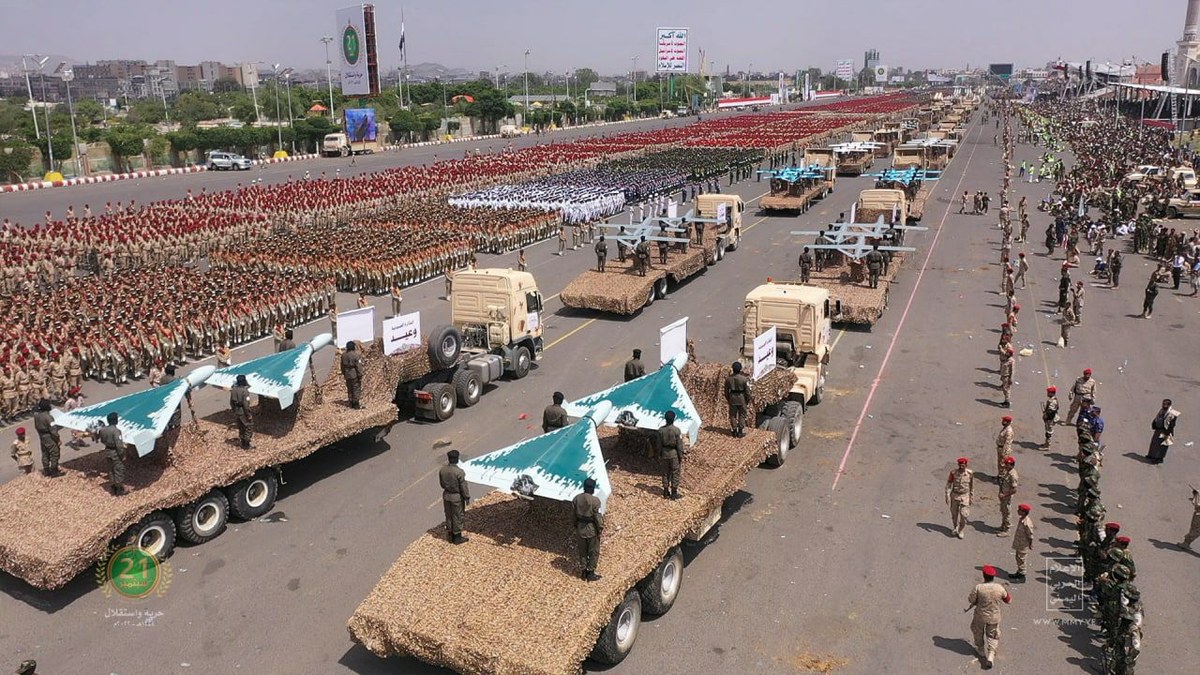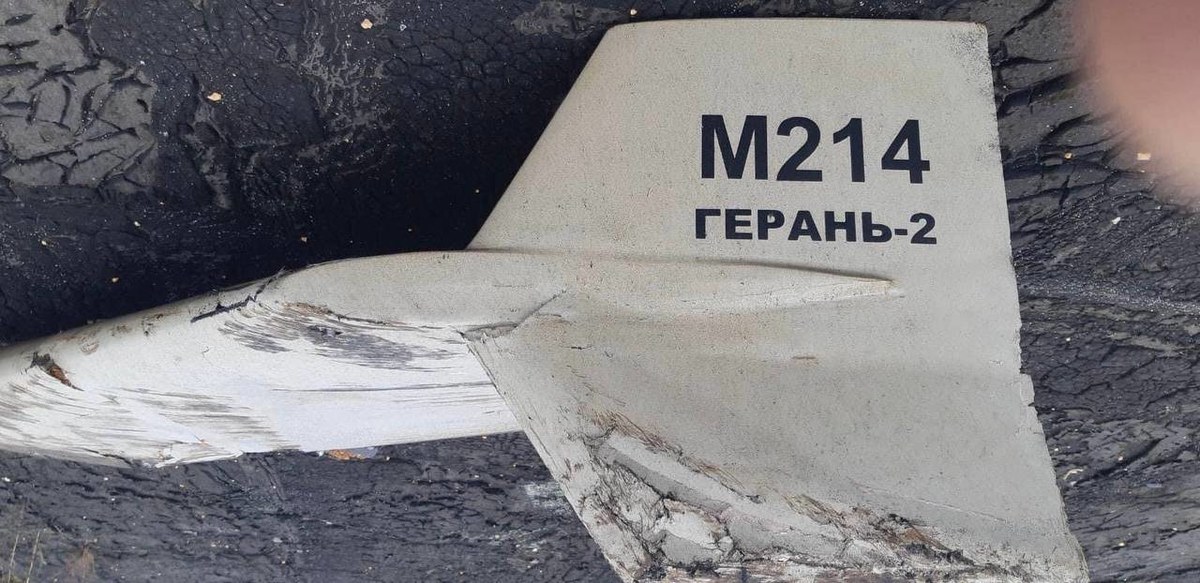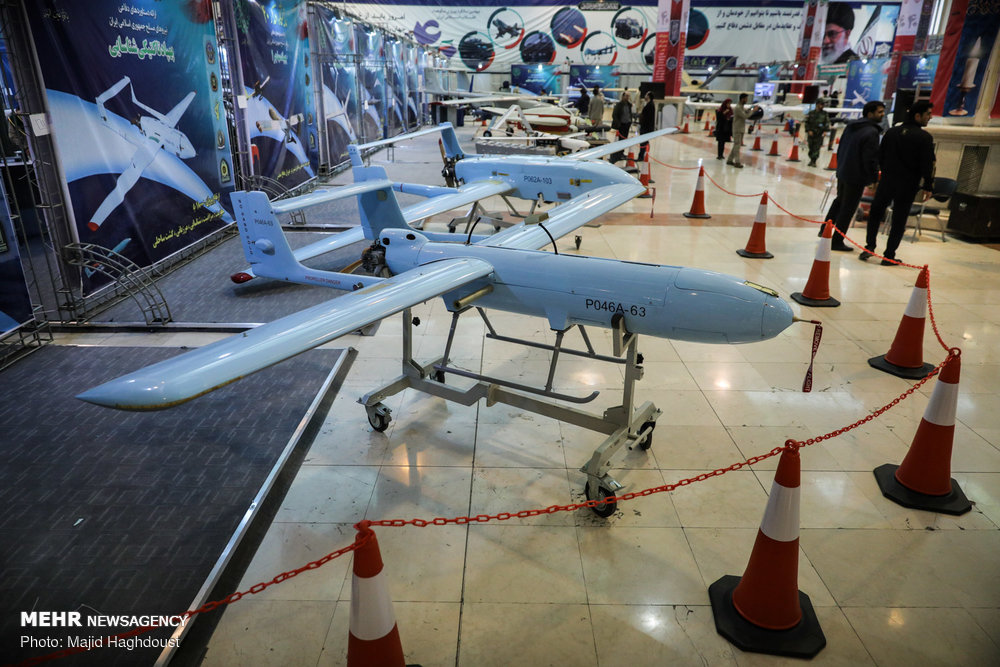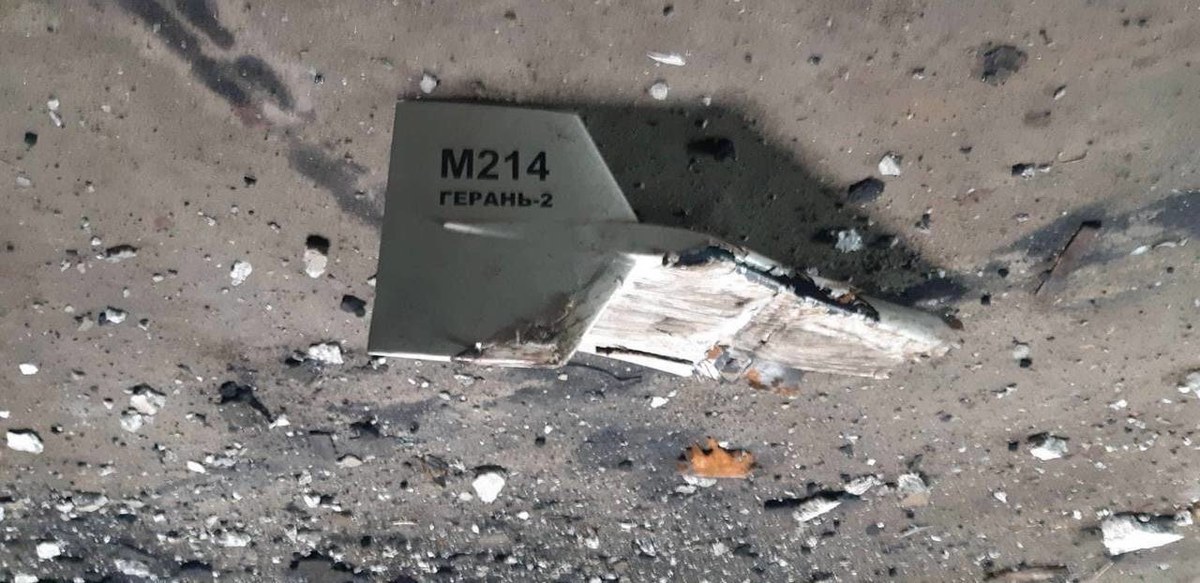IRBIL, Iraqi Kurdistan: Armed drones designed and manufactured by Iran have given Tehran’s militia proxies across the Middle East a unique capability to wreak havoc throughout the region.
The Houthi militia in Yemen, for instance, has frequently used explosive-laden drones to target Saudi Arabia. Tehran provided these militants with the means and the know-how to assemble and launch these drones to devastating effect.
In September 2019, Iranian drones and cruise missiles were used to attack oil processing facilities at Abqaiq and Khurais in eastern Saudi Arabia, causing significant disruption to global oil markets.
Iranian drones have also been deployed inside Iraq, demonstrating just how widespread their proliferation has been in this volatile region. Last week, US forces said they had shot down an Iranian Mohajer-6 drone heading for Irbil, capital of Iraq’s semiautonomous northern Kurdistan region.
Now, for the first time, Iran’s home-grown unmanned aerial vehicles are being put to the test in a different war altogether.
In September, Iran’s drones made their combat debut in Ukraine in the service of the Russian military, where they appear poised to play a significant role in the eight-month-old eastern European conflict. Ukrainian forces shot down Iranian kamikaze drones sold to Russia in an effort to target civilians, which led President Volodymyr Zelensky to dismiss Iranian diplomats from the country.
“It is sad that we have to recognize that the Iranian government is lying, as the Russian Federation government is, because we had contact with Iran’s leaders at the topmost level. We talked to the embassy, we had the ambassadors called up to the Ministry of External Affairs, and we were assured that nothing was sold to Russia, it wasn’t their drones, and nothing of the kind,” he recently told Arab News’s Frankly Speaking.
“We have a number of these downed Iranian drones, and these have been sold to Russia to kill our people, and they are — you’re right — they are being used against civilian infrastructure and civilians, peaceful civilians. Because of that, we sent Iranian diplomats away from the country. We have nothing to talk with them about.”
Nicholas Heras, director of strategy and innovation at the New Lines Institute, says there are significant differences in how Russia and the Houthis choose to deploy their fleets of Iranian drones.
“The Houthis are deploying these loitering munitions in a more strategic manner, generally trying to strike high-value targets inside Yemen but beyond their zone of control or inside Saudi Arabia. Iranian drones serve as the Houthis’ air force on the cheap,” he told Arab News.
“In Ukraine, the Russians are using the Iranian drones in a more tactical sense, using them to strike at Ukrainian artillery or arms depots that are closer to the frontlines. The Russians are basically using these drones like another type of artillery round, whereas the Houthis use them more like intermediate missiles.”
According to US officials, Iran is supplying Russia with “hundreds” of armed drones in a bid to turn the tide of the war against the Western-backed Ukrainian armed forces, which have reclaimed vast swathes of the country’s eastern territory in recent weeks.
In an exclusive interview this week with Frankly Speaking host Katie Jensen, Ukrainian President Volodymyr Zelensky said: “We have a number of these downed Iranian drones, and these have been sold to Russia to kill our people.
“They are being used against civilian infrastructure and civilians, peaceful civilians. Because of that, we sent Iranian diplomats away from the country. We have nothing to talk with them about.”
Russia has already used several of its newly acquired Iranian loitering munitions, also referred to as kamikaze or suicide drones, in this war. These particular drones are relatively cheap and can be used in large numbers, enabling them to overwhelm enemy defenses, reach their target and self-destruct.
Russia recently employed, or at least attempted to employ, this technique in Ukraine’s southern Odesa port and the city of Mykolaiv using Iranian Shahed-136 loitering munitions.

A military parade in Septemberm 2022 in Sanaa, during which drones and missiles that have been hallmarks of the Iran-backed militia's military campaign filed past a grandstand. (AFP/Houthi Media Office)
Iranian-made drones have also targeted Ukrainian artillery positions in the Kharkiv region. Ukraine’s military authorities say they have shot down several such drones, including the larger Mohajer-6 model, in recent days.
The Shahed-136 and Mohajer-6 are two very different drone types, designed to achieve different objectives.
“Shahed-136 is a loitering munition with a significant range, while Mohajer-6 is a mid-range ISR (intelligence, surveillance, and reconnaissance) and combat drone with a range of around 200 kilometers,” Samuel Bendett, a research analyst with the Center for Naval Analyses, told Arab News.
“The one Mohajer-6 drone that was recently downed probably fell victim to operator error or Ukrainian EW (electronic warfare) systems.”
Although individually they have different applications, the two drone models have also been known to be used in tandem.

Wreckage of an Iranian Shahed-136, shot down by the Ukrainian armed forces near Kupiansk in the Kharkiv region. (Ministry of Defense of Ukraine/Social Media)
“Russian commentators indicate that Mohajer may have been directing Shahed-136 to target, given that Shahed-136 does not have its own camera and has to rely on GPS for targeting,” said Bendett.
“Mohajer-6 is roughly comparable with the Turkish-made Bayraktar TB2 drone in capabilities, which gives the Russians employing it as an ISR and combat system a rough parity with some Ukrainian drone capabilities.”
James Rogers, the DIAS associate professor in war studies within the Center for War Studies at the University of Southern Denmark and non-resident senior fellow within the Cornell Tech Policy Lab at Cornell University, also described the Shahed-136 and Mohajer-6 drones as very different systems, “designed to fulfill important operational gaps for the Russian military.”
“The Shahed-136 can be used in rudimentary swarms of five drones or less and is roughly comparable to a growing family of loitering drones, like the (American) Switchblade 600 or the (Israeli) Harop,” Rogers told Arab News.
“In contrast, the Mohajer-6 is a weapons platform that can fulfill a surveillance role and also deploy its own missiles and guided bombs. This makes it broadly comparable to the TB2 type of drone, in the fact that it is a longer endurance multi-purpose weapon.”
According to Bendett, some Ukrainian sources estimate the cost of the Shahed-136 is as little as $20,000 per unit, “making it cheap enough to be mass-produced by the Russians.”
“In fact, some Russian Telegram channels are indicating that such mass production has already commenced at Russian enterprises,” he said. “If used en masse, they can pose a challenge for the Ukrainian air defenses and cause damage.”

n September, Iran’s drones made their combat debut in Ukraine in the service of the Russian military, where they appear poised to play a significant role in the eight-month-old eastern European conflict. (MEHR News Agency)
Nevertheless, Bendett is doubtful Russia’s new Iranian drone capabilities will prove to be a game-changer in the Ukraine conflict.
“They will not be able to reverse Ukrainian gains, since such gains are made by infantry and combined arms operations that hold territory,” he said.
“They can, however, cause a serious headache for the Ukrainians given a possibly high rate of attrition of weapons, systems and personnel due to continued attacks by Shaheds.”
Rogers, meanwhile, believes it is still too soon to determine whether the Shahed-136 and Mohajer-6 “will have a transformative impact” on the Russian war effort.
“A number of the Iranian drones have already been shot down by the Ukrainian military, but there are reports of them being used successfully against the US-supplied High-Mobility Artillery Rocket Systems that have been indispensable to Ukrainian forces,” he said.
Indeed, the GPS-guided Shahed-136 has proven remarkably accurate, as demonstrated by the “recent Ukrainian admission that Shaheds have struck artillery batteries as well as stationary targets like buildings in Odesa,” said Bendett.
However, the drone model lacks sophisticated electronics, and a robust electronic warfare defense “can interfere with their operation,” he added.

Wreckage of another Iranian Shahed-136, shot down by the Ukrainian armed forces near Kupiansk in the Kharkiv region. (Ministry of Defense of Ukraine/Social Media)
It would be wrong to underestimate the significant advantages drone technology can bring to the battlefield.
According to Rogers, the Shahed-136 is comparable to a modern cruise missile “in that it can hit targets with precision and explode on impact but differs in the fact that it can remain airborne, survey the battlefield and adjust its target in reaction to developments on the ground.
“It can also be used in a multi-drone ‘swarming’ deployment to saturate ground defenses, opening the floodgates — so to speak — to a range of other missiles and rockets,” he said.
Bendett likewise believes the Shahed-136 has given the Russian military the ability “to launch long-range loitering munitions at targets in large numbers at different tactical and operational depths.”
This is significant because it is “something they have struggled to do in the preceding months given their limited stocks of domestic loitering and combat drones.”
He added: “Russia also gains valuable lessons from Iran’s own use of these drones via their multiple proxies across the Middle East, possibly adding to new tactics and procedures in Ukraine.”
Aside from providing Russia with lessons and doctrines, these drones also serve as substitutes for Russia’s depleting stockpile of cruise missiles, which will likely take Moscow years to replenish to pre-war levels.

A Ukrainian soldier looks up to the sky after hearing the sound of a drone during a patrol in the frontline city of Kupiansk, Kharkiv region, on September 24, 2022, amid the Russian invasion of Ukraine. (AFP)
“With trade restrictions and embargoes placed on Russia, the military has found it hard to replace lost military assets,” said Rogers.
“This is why the convenient arrangement with Iran has emerged. It allows Russia to obtain military capabilities it has run low on or does not have the supplies to produce.”
The more battle testing Iran’s drones rack up in Ukraine and across the Middle East, the more sophisticated they are likely to become. That is why Heras believes both Kyiv and Riyadh need to enhance their air defenses to adequately deal with this threat.
“The Ukrainians have used portable anti-air missiles fired by infantry or vehicles to shoot down the Iranian-made Russian drones, albeit with a mix of success and failure,” he said.
In recent years, Saudi Arabia has expended a large number of expensive Patriot interceptor missiles, which cost millions of dollars per shot, against Houthi drones that cost mere thousands to manufacture.
“Eventually, Israeli- and American-developed anti-air systems intended for smaller rocket types could be useful for both Ukraine and Saudi Arabia,” said Heras.
“Especially for Saudi Arabia, which would need these defenses to protect strategic targets that the Houthis prefer to strike.”





























